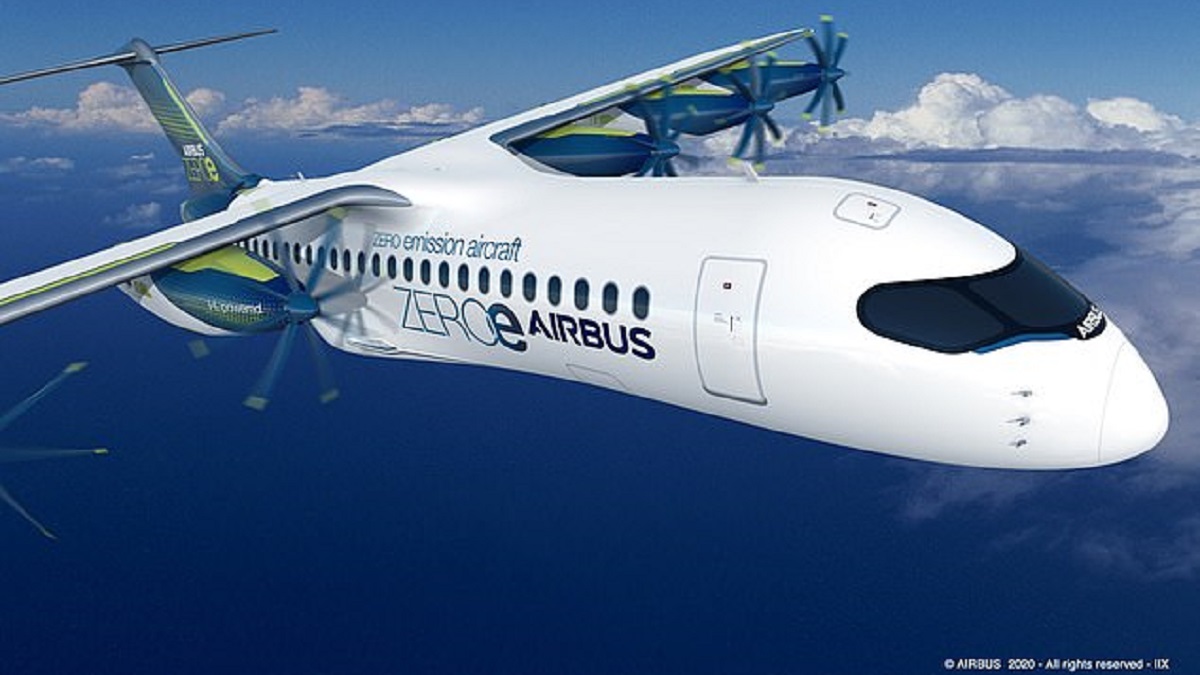
Airbus is planning an electric airplane. Possibly beating and refuting Elon Musk’s famous negative comments, the Airbus electric airplane will run on Hydrogen fuel cells.
Airbus’ electric airplane with a Hydrogen fuel cell is apparently under active development. It is not in production or even under the prototyping phase. However, the concept appears practical and feasible as the majority of technology is readily available.
Airbus wants to revolutionize air travel and begin a new era of zero-emission flights with Hydrogen fuel cell-driven electric airplane:
Airbus has revealed its designs, and quite possibly a roadmap, for self-contained hydrogen fuel cell pods. These will conveniently attach to the underside of airplane wings. Incidentally, these are not mere hydrogen fuel cell pods.
Airbus has indicated it has plans for designing a Hydrogen fuel cell pod that is all-inclusive. Simply put, each of the pods will contain a propeller, all the fuel, motors, cooling, and engineering needed to provide thrust on long-range flights.
Interestingly, the Airbus Hydrogen fuel cell electric airplane appears to be customizable for range. These fuel cell pods are detachable. Airplane maintenance crews can simply clip on or off these pods after or before a flight.
Such a modular design should cut down on the maintenance. Moreover, airplanes with Hydrogen fuel cell pods need not be grounded to perform routine maintenance or repairs on the thrust delivery systems.
Airbus can get multiple or surplus all-inclusive hydrogen fuel cell pods and stock them for quickly swapping or attaching on the airplane.
How will the Airbus Hydrogen fuel cell electric airplane function?
In the concept revealed, the Airbus Hydrogen fuel cell electric airplane has three of the pods attached to the underside of each wing. The pods will store Hydrogen and air inside.
The fuel delivery system will channel the fuel to a fuel cell where the pod will make an electric current. This current will power the electric motor, causing the motor shaft to rotate. The shaft will turn the eight-bladed propeller.
.@Airbus Releases New Details for Hydrogen ‘Pods’ Aircraft Concept https://t.co/er2kPW09k4
— Fuel Cell India 🇮🇳 (@FCIndia_) December 23, 2020
Airbus has designed the propellers to provide the added thrust needed during the takeoff and climb-out phases of flight. When the airplane reaches cruising altitude, the all-electric motor should enter the correct mode needed for constant speed while saving energy.
“This ‘pod’ configuration is a great starting point to nurture further inquiry into how we can scale up hydrogen technology to commercial aircraft. This is one option, but many more will be conceptualized before we make a final selection, a decision that is expected by 2025,” said Glenn Llewellyn, VP of Zero-Emission Aircraft.
The Airbus Hydrogen fuel cell airplane design is part of its ‘Zeroe’ fleet. There are a few more designs which are named, Turbofan, Turboprop, and Blended-Wing Body. The majority of these planes should enter active service in 2035.


